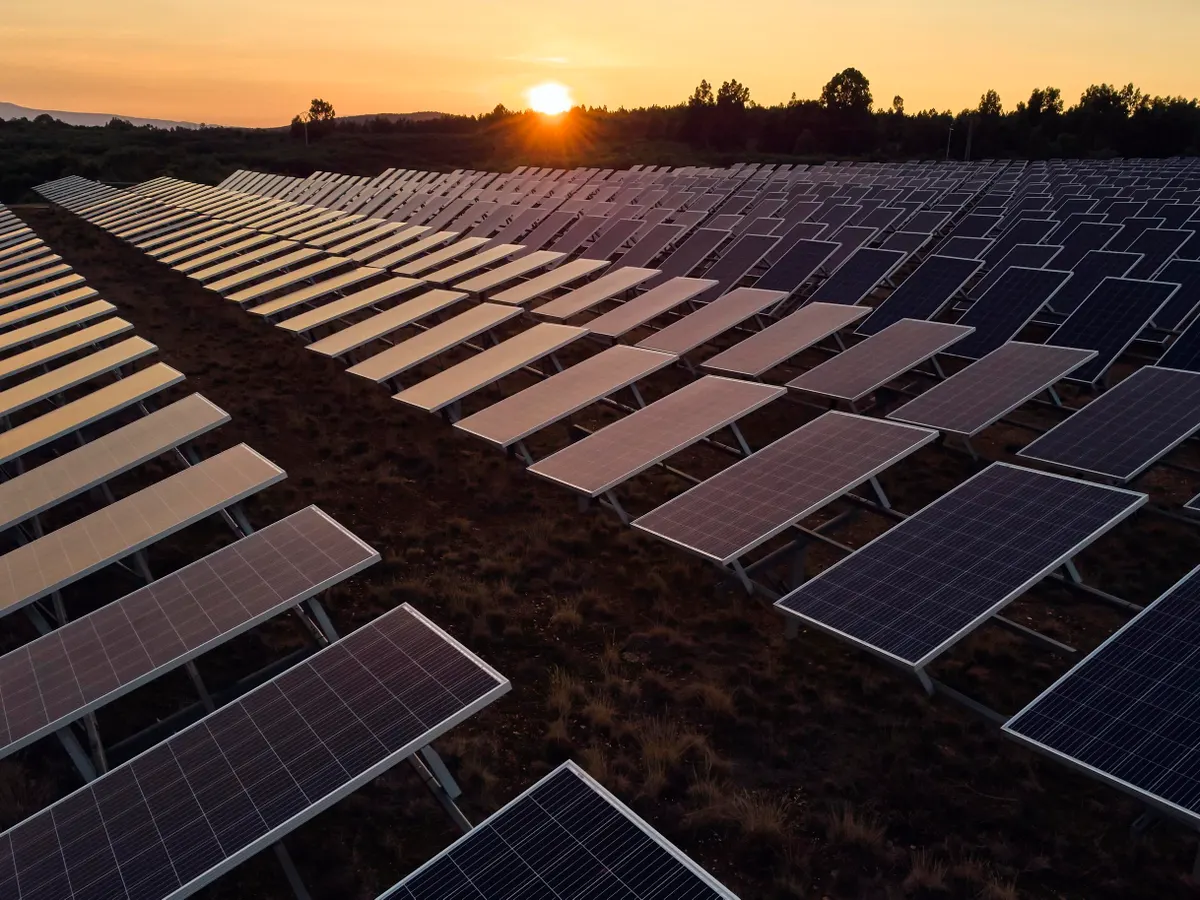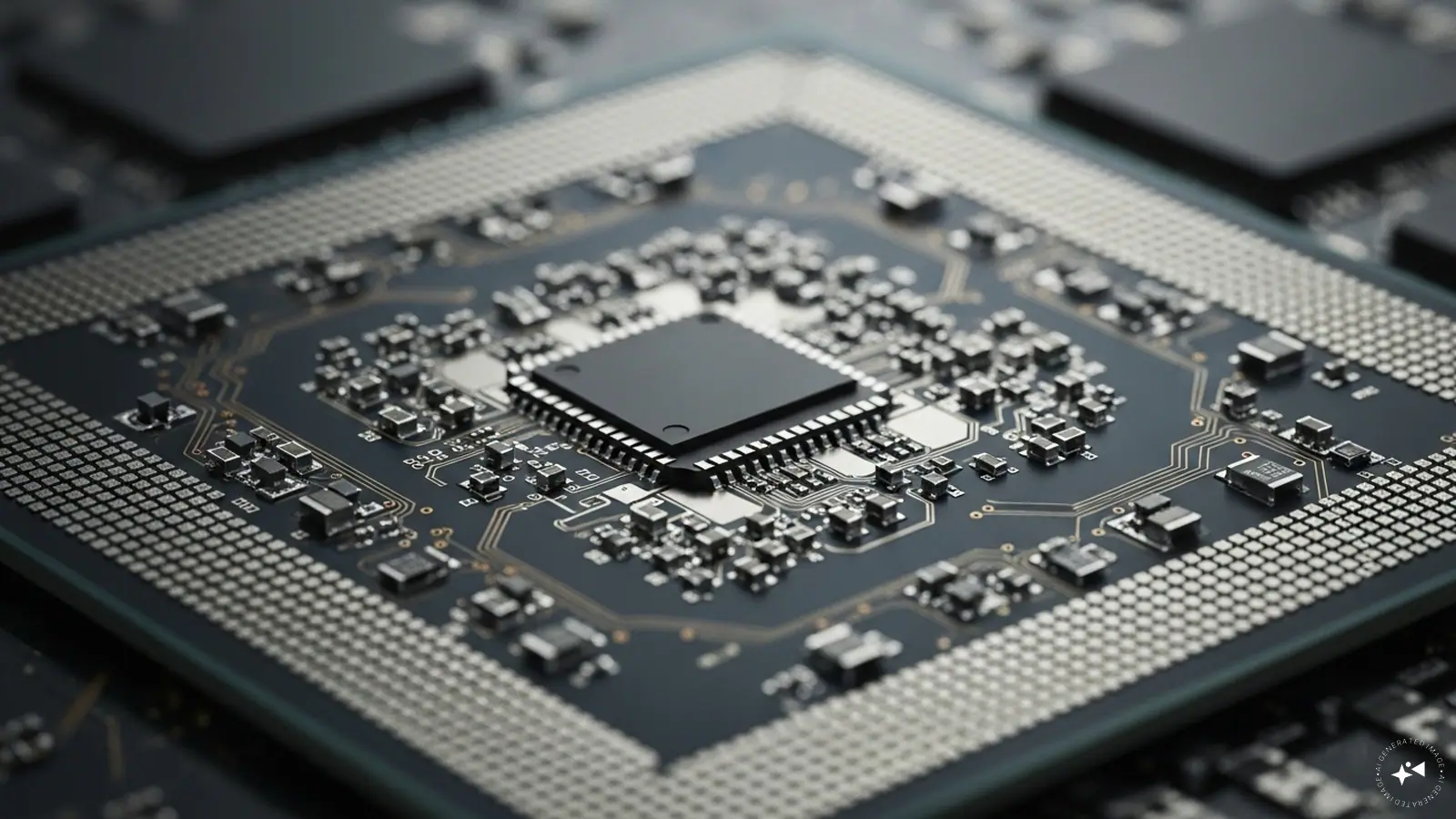By Sabbir Rangwala,Senior Contributor
Copyright forbes

VILARDEVOS, OURENSE GALICIA, SPAIN – JUNE 21: The Vilardevos solar park, on 21 June, 2023 in Vilardevos, Spain. 55% of data centers in Spain operate with renewable energy
Europa Press via Getty Images
Energy needs for data centers is significant and rising, stressing traditional power plants that rely on hydroelectric, coal, oil and natural gas. According to a 2024 report by the Lawrence Berkeley Laboratory (a U.S. Department of Energy institution), data centers consumed ~2% of total power generated in the United States in 2018. By 2028, this is projected to grow by 3X – 6X, and drawing as much as 10% of the power generated by commercial grids. Apart from computing, computers generate massive amounts of heat and need to be cooled. Cooling consumes 30-50% of the energy requirements.
The growth in data centers is driven by computing needs for Artificial Intelligence (AI) and Crypto currency mining. In raw numbers, power needs are projected to grow from 76 TWh in 2018 to 500 TWh in 2028. For reference, New York City consumes ~ 11 TWh per year (non-data center). This means additional power to support the equivalent of 50 NYC-sized cities will be required by 2028 to power data centers, costing billions of dollars in investments by grid operators, AI giants and government authorities. That is a lot of power and money, and there is already pushback from local communities and grid operators against constructing data centers in their communities. A suggested solution is to encourage data center users (AI and crypto mining companies) to establish sustainable power generation and reduce loads on the electric grid, especially during peak power periods. The AI and data center craze is international – Reliance, one of India’s largest conglomerates just announced formation of a subsidiary called Reliance Intelligence which will focus on green energy based AI and data centers. Similar initiatives are underway in the Middle East, Central Asia, China and Australia.
Solar farms are one option for sustainable energy, and construction of such plants in land and sunlight rich areas like Arizona are growing dramatically. According to a recent U.S. Department of Energy report, renewable energy generation (comprised of wind, solar, hydro and other sources) is projected to increase from 30% in 2021 (total grid capacity of 1.1 TW) to 35% in 2028 (total grid capacity of 1.25TW). Of this, solar is expected to see the fastest growth (fromm 3.5% of total grid capacity in 2021 to 13% in 2028).
There are significant bottlenecks to implementing this enormous growth. Its not about semiconductors or software or computers. It is plain old civil engineering and construction – grass, land levelling, digging, driving foundation structures like piles, and finally the solar panels. To get a sense of scale, a 400 MW plant requires about 2500 acres (4 square miles) of land in areas with large amounts of sunlight all year round. It accommodates ~1M solar panels (which occupy ~500 acres). The remaining area is taken up by mounting structures and clearance space between panels to allow for active tracking of sunlight without shadowing neighboring panels. The availability of skilled labor to do all this is severely limited, impacting the pace at which these installations can happen. This is where physical AI steps in – to do the hard construction work on a 24×7 schedule with precision, real-time project monitoring, quality control and significant reduction in human resources.
The drive to use physical AI for solar power plant construction is similar to other blue collar industries like agriculture, mining, quarrying, construction, garbage hauling and airfield logistics where skilled labor is in short supply, physical conditions are hard and remote, and physical AI optimizes process flow, safety. As opposed to autonomous vehicles which get most of the publicity around physical AI, blue collar autonomy is the leading application that actually addresses urgent needs and delivers dramatically higher financial, schedule and quality payback.
MORE FOR YOU
Xpanner, “Redefining Construction with AI-Powered Automation”
Founded in 2020 in South Korea (as Spanner) with $27M in investments, the company located to California in 2023, and is headed by CEO Henri Lee, who gained significant experience in construction at companies like Bobcat (acquired by Doosan Heavy Industries in 2008) and Hyundai Infracore. It brands itself as an provider for the construction industry, is profitable, and to date has completed 23,000 autonomous hours serving customers across the globe. It has achieved revenue growth of ~250% over the past 2 years, primarily fueled by the growth of data center and energy project construction. It expects to book $21M in revenues across 14 projects in 2025 (currently at $17M). Currently, it has 65 employees based in South Korea and the United States.
Per Mr. Lee, Xpanner customers are looking to address skilled labor shortages, improve operational efficiency and safety, and very importantly, provide real-time project status information to customers (typically construction companies) and their customers (AI giants, energy businesses, land developers and government entities). Real time conversations and messages between on-site staff are also recorded and processed through LLMs for communicating problems and status. These capability are critical for ensuring that quality and build-to-print designs are being executed, gaps are corrected quickly, and unexpected issues escalated and resolved, minimizing expensive rework and schedule impacts.
Once Xpanner starts a project, it typically takes 2 weeks of preparation time to configure their hardware and software stack for the specific location and task. Their X1-Kit is the main workhorse, composed of sensors (IMUs, GPS and cameras), controllers, and perception/route planning/motion control software to move customer equipment like mowers and pile drivers. The perception capability is achieved through use of site-specific training data collected during the preparation phase complemented by a portfolio of data from other sites, as well as generative-AI based synthetic data sets. Path planning and motion control is based on logic-based AI rules. These autonomy modules are constantly upgraded as the machine adapts to its environment. Figure 1 describes what Xpanner’s does with it’s X1 autonomy kit.
Figure 1: Top Left: Piles Driven into Prepared Ground in Arizona Solar Farm. Top Right: Xpanner’s Mango Automation Controller for Real-time Decision-making & Precision Control in a a RTOS (Real-Time Operating System) Environment. Bottom Left and Right: Pile Driver with Xpanner Autonomy Stack
Mr. Lee’s envisions
Mortensen – Building for The Greater Good
Mortensen is engaged in industrial, sustainable energy and commercial real estate construction. renewables, storage and data center projects. Founded in 1954, the company is privately owned, headquartered in Minneapolis, and serves customers globally, offering integrated design-to-construction services. Annual revenues are in the $10B range. It is one of the leading companies in the United States for solar farm construction. To date, it has executed more than 12 GW of projects across 17 states (750,000 acres, equivalent to the area of Rhode Island).
The solar construction effort started in 2012 under the leadership of Trent Mostaert, with ~20 construction personnel on staff. Today, it has grown significantly, with over 3000 personnel. The growth started really taking off in 2020, as the AI and data center activity exploded and adoption of electric vehicles increased. The question for Mr. Mostaert was – The company was facing significant challenges in recruiting qualified people who were available to work in harsh conditions in remote locations. Mortensen established the industrialization group (Mr. Mostaert is the founding member and Vice President), which focuses on R&D and next generation technologies aimed at making construction work easier for their people. The efforts are focused on improving processes, construction equipment and tooling to enable physical AI based autonomy.
One of the main construction functions for mounting solar panels in a land-based farm is the installation of structural mounts (or piles, see Figure 2) that holds the mounting structure for the solar panel and the associated power and control electronics. These are typically installed by machines called pile drivers which are basically hydraulic hammers that drive piles into the ground, using a combination of pressure and vibration. A major supplier of pile driving equipment is Italy-based Orteco, a 50 year old company that has sold over 2000 pile drivers globally (globally, pile driving equipment is a $1.2 B/year business, with each machine costing ~$100K). Mortensen’s industrialization group worked with Xpanner to install the X1 kit, on Orteco machines, and this has sped up the process by 50%, and dramatically reduced the number of human workers required in the vicinity of these operations.
Figure 2: Mortenson’s Solar Industrialization Program Transforms Utility-scale Construction Using Advanced Robotics, & Process Optimization
Per Mr. Mostaert, ”
QCells – Birth of a Sustainable Future
The company was started in 1999 in Germany, and for the next 15 years, focused on innovation, product design and manufacture of high efficiency PV (Photovoltaic) cells and modules for residential and commercial markets. In 2012, the company was sold to the South Korea based Hanwha group (it is currently headquartered there). Starting in 2016, it started diversifying into storage solutions for residential and commercial buildings as well as turnkey installation of its solar panels at these sites. In 2019, it established a the largest solar factory in the Western Hemisphere – 300,000 sq ft factory in Dalton, Georgia, United States, with a capacity to produce 12,000 PV modules per day (at ~400W/module, this translates to 1.7 GW, enough to build a solar farm that can power a major urban area like NYC). It is also expanding capacity in Georgia and Washington, and continues to manufacture in Malaysia. It is currently the largest supplier of solar panels in the United States. In total, it has invested > $3B to build its U.S. solar supply chain.
In 2024, QCells established the EPC (Engineering Procurement & Construction) division in order to provide turnkey services for solar farm projects in the U.S. Jeremy Teresinski is the Vice President of this division. The company is currently working on ~20 active projects, varying between 150 MW to 1.5 GW capacity. In total, it has 6 GW of operating and in-progress projects in the United States. With the establishment of QCells EPC, the company is vertically integrated – from PV module, rack and alignment system manufacturing to solar farm design and construction, warranty, operations and maintenance support. Figure 3 shows the recently completed 150 MW solar farm project in Cheyenne, Wyoming, for the Southern Power Company.
Figure 3: QCells EPC’s Recently Completed Solar Farm Projecct in South Cheyenne, Wyoming
QCells started working with Xpanner in 2024 on its project in Missouri, initially on deploying the X1 kit on pile drivers (Orteco and Vermeer). In the future, it expects to leverage autonomy to also perform the ground leveling function (prior to pile install), module install and tracking system install. The goal is to reduce project timelines, improve quality and safety and reduce reliance on hard-to-find trained personnel.
Mr. Teresinski is passionate about physical AI’s impact on sustainability and business metrics.
Black and Veatch – Building a World of Difference
The company is more than a century old, headquartered in Kansas, employee-owned and generates ~$5B in annual revenues. It is focused on delivery of human infrastructure projects which minimize carbon footprint. One of its four business units is Black & Veatch Construction, Inc.® (BVCI), which services to the power, water and communications markets. Typical end customers include utilities, land developers and local governments. It is the largest company in the U.S. for solar power farm construction, and within the top five globally, and has executed > 700 solar projects over the past 10 years.
Michael Owens is the Solar Innovation Team lead. He indicates that 53% of utilities cite limited available power as the top obstacle to getting data centers online. The permitting process for conventional power plants is significant. Solar energy is the answer, and using Physical AI to reduce time to permit is critical. This capability enables higher safety and efficiency as solar plants are constructed in remote areas, where skilled manpower mobility is limited. It also allows real-time visibility into project status and quality, minimizing schedule delays.
Xpanner has been a partner in the journey. Typical projects require 30-50K piles to be driven into the ground for a 400 MW project (20 panels to a pile). Xpanner solutions enable the perfect logistics (what equipment to send to what location on the farm), control the ground levelling and pile-driving machines (~20 of each), increase safety (remote operations), reduce headcount (by 50%), and reduce project time (by 30%). Figure 4 shows deployment of Xpanner solutions for autonomous pile driving.
Figure 4: Black & Veatch Solar Panel Construction Crew Utilizing Xpanner Technology for Pile Driving
Black and Veatch
Michael Owens:
Future Directions
Solar farms also need constant surveillance to ensure terrain and panel health. The use of camera-equipped drones to monitor construction progress and quality, as well as provide ongoing surveillance is on the rise, another example of physical AI platforms enabling affordable and practical realization for data centers to support AI. Other robotics companies are also working to develop solutions for other aspects of solar farm construction like handling and mounting of solar panels. One such company is a California start-up, Cosmic Robotics, which is building mobile robots to execute autonomous photovoltaic installation for utility-scale solar facilities.
In general, AI (physical and digital) is promising a lot, but delivering very little and certainly losing billions today. Blue collar autonomy is the one profitable sector fueling physical AI – in areas like mining, quarrying, construction, agriculture and airport logistics. It is solving real problems of labor shortage, safety in harsh and remote environment operations, and delivering quality and operational efficiency. Driverless cars are great, but still to show any promise of real need and profitability. Construction of renewable energy capacity (like solar) to power digital AI is critical. Physical AI and construction autonomy are making it happen. It is enabling data center construction and operation, a key enabler for AI to deliver on its promises.
Editorial StandardsReprints & Permissions



